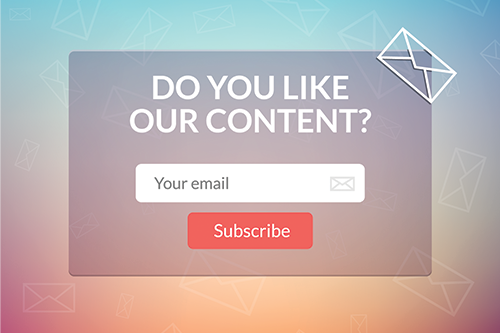
By: Craig Spooner
We have the tools to target our marketing to educators more effectively than ever before. Nearly any aspect of a campaign can be personalized and automated, but what about your website?

You may be saying, “Huh? How can I personalize my website for different readers?” Well, with the advent of marketing automation software like HubSpot, Marketo, and Pardot, websites are no longer limited to being static, online “brochures” for companies to show and tell about themselves. They are now your eyes and ears into the online world. Your website can tell you:
With the emergence of new features in website automation, the most valuable work you can do on your site is tracking your visitor’s activities, engagement, and user experience while they are exploring your content.
There are many aspects of your website that contribute to a positive user experience, but few are more important than the design, placement, and use of your web forms. (Check out this blog on landing pages for more as well!) Web forms allow your visitors to communicate with you. Used properly, they provide you with insights into a recently converted lead. They also give you the ability to gather key information without directly asking for it. For example, rather than asking a visitor if they have budget to purchase a solution like yours, why not ask them what type of funding they have used for a purchase like this in the past? This will allow you to determine if they have budget and let you know what bucket that money would come from.
However, if used improperly, web forms can easily frustrate site visitors, pushing them to leave your site (and potentially never return). How many times have you visited a site and said, “This is too complicated—I’m going to look for something easier?” I know I have. Let’s take a closer look at web forms, their role in shaping the user experience, and the steps you can take to improve their performance and increase engagement.
Why Website Forms Matter in Education Marketing
Let’s start with the basics: web forms allow you to capture information from your prospects in return for a valuable piece of content on your site. Forms act as a communication bridge between you, your content, and your prospective customer. Web forms are extremely important for many reasons, but here are the four most crucial.
The main takeaway from this blog post should be to create more specific web forms tailored to your buyer persona(s) and the content you create specifically for them. Taking the time to double-check the value of your content from your prospects’ points of view will help you deliver content to your prospects that they will value, increasing the chances of future conversions and giving you the insight you need to create content that matters to your audience, not just your company.
Thank you for sharing!
PRP Group, a Hawke Media Company, is an award-winning full-service education PR and marketing firm serving the pre-K–12 and higher-ed community.